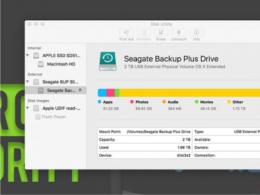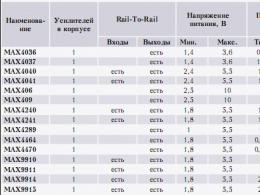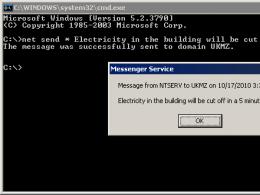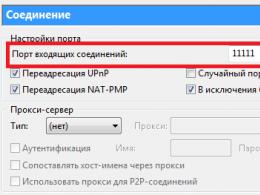How many A4 pages are in one printed sheet. Printed sheet
Half the printed page has been and continues to be published by such publications as “Pravda” or “Literary Newspaper”, A3 - “Arguments and Facts”).
To calculate the number of printed sheets, the ratio of the area of the publication to its size is used.
So, in order to calculate the volume of a publication in printed sheets, you will need initial data on the length and width of its page (or, as they say in the publishing business, strip). Multiply the length of the strip by its width. The result of this arithmetic operation will be the area of one strip. For example, for a publication with a strip width of 20 cm and a length of 30 cm, this is 600 sq. cm.
The area of the printed sheet is also easy to calculate. Just multiply 70 by 90 and you get 6300 sq.cm.
Now you need to find out how the volume of the publication relates to the printed sheet. To do this, divide the area of the publication page by the area of the printed sheet. For the above case, this coefficient is approximately 0.095.
Now multiply the number of pages of the publication by the resulting coefficient. For 100 pages measuring 20 by 30 cm, you need a coefficient of 0.095 multiplied by 100. It turns out that 100 pages of the specified size will take 9.5 printed sheets.
note
Due to the active use of different fonts and graphic design elements in modern printing, a printed sheet can accommodate varying amounts of text.
In general, the modern global trend in journalism and book publishing is aimed at reducing the volume of text on a page to make the presence of design elements more noticeable than in previous times. This is, for example, various infographics: tables, charts, graphs. Or takeaways - bright quotes from the main text, placed on a page different from the body of the note, usually in a larger font.
Back in the 90s of the last century, it was believed that an A3 newspaper page could contain an average of 16 thousand characters of continuous text typed in a standard font. Due to the headings, subheadings and illustrations, it really fit even less then. Now one page of a modern newspaper usually contains no more than 6 thousand characters.
To estimate the volume of text in book publishing, another unit of measurement is used - the author's sheet, numbering exactly 40 thousand characters with spaces or 700 lines of poetic text. The volume in copyright sheets in this area often plays the role of a unit of measurement for the fee of the author, editor or translator. There are also payment options per word or 1 thousand characters with or without spaces.
Helpful advice
In newspapers and magazines, journalists' fees are usually marked per thousand characters with spaces (sometimes without) based on the results of the month. However, there are other payment options. For example, in many Western and Russian media oriented to their standards, it is implied that a full-time journalist receiving a salary must prepare at least a certain amount of text or number of publications per month. However, only the lazy are unable to meet these standards abroad. If the minimum standard is exceeded, additional payments are often not due.
Sources:
- how to identify printed sheets
- What is an author sheet?
- How much is 1000 characters?
A printed sheet is usually called a paper sheet of any format on which text is printed on one side. But documents in many applications are also presented to the computer user in the form of conventional printed sheets. And for other programs there is an option to view pages in the form in which they will be printed. To determine printed sheets, their type, quantity, format, you need to use the tools of a specific application.
Instructions
The printed sheet looks most clearly in the text editor Microsoft Office Word and similar programs. By default, sheets in a Word document are created in (the top edge of the document is narrower than the side) and in A4 format. To see the printed one, on the View tab, in the Zoom section, set the value to Full Page and click OK.
You can determine what type of printed sheet will be in another way. On the “View” tab, in the “Document Viewing Modes” section, click on the “Reading Mode” button - you will see a full printed page in your editor window. To exit this mode, click the “Close” button in the upper right corner of the window.
But in document editing mode, this scale is not always convenient, so click on the Office button in the upper left corner of the window and select the “Preview” submenu item from the “Print” menu. In view mode you can set new and format.
Use the appropriate buttons and drop-down lists on the menu bar in the Page Options section. To exit this mode and return to document editing mode, click the “Close Preview Window” button on the menu bar.
In Microsoft Office Excel documents, graphic editors and other applications, printed sheets are not always displayed in document editing mode. To determine how the document will look when printed, also use the document preview feature. This option is always found in the File menu.
You can set additional parameters for documents to be printed in the “Print” window - they should be located on one sheet, whether there should be double-sided printing, which pages - even or odd - will be printed. Use the appropriate buttons in the Print window. It can also be called from the “File” menu.
Video on the topic
In old literature on printing, the term “printed sheet” appears quite often. Now it is almost out of use. In journalism, book writing and some other areas, it has long been customary to count the amount of text in characters. Western and some Russian publishing houses often use the number of words or the traditional author's sheet as a unit of measurement. However, sometimes it becomes necessary to count the number of printed sheets in a publication.

You will need
- - actual size of the printed sheet;
- - number of pages in the publication;
- - size of the conventional printed sheet:
- - ruler;
- - calculator.
Instructions
The standard printed sheet is 70x90 cm. Common newspaper and magazine formats are multiples of the printed sheet. For example, A2 format represents half of this conventional unit, A3 is a quarter, and A4 is an eighth. These formats are ubiquitous to this day. However, book and magazine pages can have other sizes. In addition, printed ones allow you to place different amounts of text on the same page, since different sizes and different layout options can be used.
Calculate the actual page area just as you would for any rectangle. Measure and multiply the length and width. It can be written down using the usual mathematical formula S1=a*b, where S1 is the area of the strip existing in reality, a and b are the length and width. In the same way, calculate the area of the printed sheet by multiplying 70 cm by 90. It turns out 6,300 cm2. For convenience, it can be designated as S2.
Find the conversion factor for this edition. It represents the ratio of the area of an actual book page or newspaper page to the area of a conventional printed sheet. Find it using the formula k=S1/S2. It is enough to round the result to the nearest hundredth.
Count the number of printed pages in the entire publication. Count the number of book pages or newspaper strips. Multiply the resulting number by the coefficient k. This method of counting is convenient for publications typed in a standard font on a sheet of paper with standard formatting.
Helpful advice
With the advent of computer prepress technologies, the method of counting texts on printed sheets has become very inaccurate. Until about the 90s, it was believed that a regular A3 newspaper page could hold about 16 thousand characters. In fact, even then most often there were no more than 13 thousand. A modern newspaper page of the same format most often contains from 6 to 10 thousand characters, and sometimes less. Therefore, a printed sheet is used extremely rarely to determine volumes.
Much more accurate is another old unit of measurement - the author's sheet. It is accurate primarily because it is calculated not from the area, but from the number of characters, which allows you to measure virtually any text. The author's sheet contains 40,000 characters without spaces. For a poetic text this is 700 lines. In principle, this method is not much different from those that are now used in most editorial offices, publishing houses and translation agencies.
Handwritten books did not have any stable formats. Their sizes were determined by the customer’s requirements and purpose, for example, the altar Gospel was larger than a book intended for everyday home use.
The use of paper brought some order; now the size of books was based on the size of the paper sheet. But paper manufacturers set sheet sizes arbitrarily.
Typography, aimed at mass production of books, required the unification of their sizes. Then the question of book formats arose.
In the 16th-19th centuries. In Western European publishing, four formats were used: in-plano (full sheet), in-folio (half sheet), inquatro (quarter sheet) and in-octavo (1/8 sheet). The latter format was introduced in the 16th century by the Venetian publisher A. Manutius, who sought to make books a more accessible product - inexpensive and easy to handle.
Until the mid-19th century, there were three varieties of in-octavo format: large (book height 250 mm), medium (200 mm) and small (185 mm). In the 17th century, the Elsevier format (80 by 51 mm), named after the book publisher Elsevier, became widespread.
In Russia, the beginning of the use of small book formats dates back to the era of Peter I. In the 18th century, books appeared in 1/12, 1/16 and even 1/32 sheet formats.
In 1895, the question of standardizing book formats was first raised in Russia, and in 1903, the Russian Society of Printing Workers established a system of 19 formats, but its practical application was difficult due to competition between publishers.
In 124, a standard was introduced in the USSR, including eight formats.
Modern print formats
Currently, book formats are used in the Russian Federation, grouped into five groups: extra-large, large, medium, small and ultra-small.
The format of the book edition is indicated on the last page along with the date of signing for printing, type of paper, circulation and other data. It is written as follows: 84×108/16 or 70×100 1/32. The first number in this formula indicates the width of the original paper sheet, the second - its height, and the third, which in some cases is expressed - the number of parts into which the sheet was divided.
Sources:
- Print formats
- Standard book formats
It is difficult to imagine what humanity could have been like if paper and the technological process of printing had not been invented. Works of art are published on paper, scientific works are printed, and interesting news is published. However, despite all the amazing variety of books, newspapers and magazines, it is easy to notice that there are not many different page formats for different publications. How can you measure the size of a sheet of a particular format? The basis for considering this issue is the printed sheet.
Here we will try to look at this situation impartially through the eyes of an ordinary person. What paper formats does he see around him in real life? Let us briefly list them. These are standard sheets of newspaper sheets in several versions, several different book formats. How to bring this diversity to one basis? If we take a standard piece of paper as a basis, then how can we express others based on it? But here the traditional solution to this issue comes to the rescue. Historically, a printed sheet measuring sixty centimeters by ninety centimeters was chosen as the base size, which was called a “conventionally printed sheet.” Typically books, newspapers and magazines measure their format in relation to it. The standard is a printed sheet filled with text on one side. These concepts must be distinguished from the concept of "physical printed sheet", which means the actual printed sheet of the publication.

Thus, the volume of any printed publication, for example, books, newspapers or magazines, can be estimated in relation to a conventional printed sheet. Let's try to show this with an example. Let's say we are talking about a book whose format is 70cm x 100cm/16 and has 192 pages. In order to calculate the volume of a book, you need to carry out the following calculations. Conventionally, a printed sheet has an area equal to 60x90 = 5400 square centimeters, a physical printed sheet has an area of 70 cm x 100 cm = 7000 square centimeters. The conversion factor is 7000/5400 = 1.29. The final calculation looks like this: (192/16)x1.29=15.48. So, in our case, we can say that the volume of the book in question is 15.48 conventional printed sheets. This is how it is customary to indicate the volume of a printed publication.

To complete the picture in this matter, it should be noted that two more standard types of printed sheets are common. This is the author's printed sheet and the publishing sheet. The first of them has several measurement methods (40,000 printed characters including spaces or 700 lines of poetic text or 22-23 regular typewritten pages) and is intended to measure the volume of the author's work provided for printing. The second occupies the same size as the author's printed sheet, but its volume does not include the one present in this edition.
The printed sheet, as it turns out, comes in different types, which are useful to understand. This concept plays a big role in book publishing. It allows you to realistically assess the amount of typographic work performed when publishing a book.
Author's sheet is a unit of measurement of the volume of material created by the author or processed by a translator, editor, proofreader, etc. The author's sheet is equal to 40,000 printed characters (including spaces between words, punctuation marks, numbers, etc.), or 700 lines of poetic text, or 3000 cm² of illustrative material (graphs, drawings, tables). The author's sheet forms the basis of a special counting system for determining the volume of manuscripts and published works prepared for publication.
As a rule, one author's sheet is 22-23 pages of text typed double-spaced between lines on a typewriter (an average of 1800 characters per page), or 10-12 pages for text typed on a computer and printed in 12-point font single-spaced (average 3,500 characters per page).
Printed sheet
A printed sheet is a unit of measurement for the volume of a publication, equal to the area of one side of a standard paper sheet. Printing sheet capacity - the number of printed characters that fit in one printed sheet. The same printed sheet, depending on the typeface, the number of characters per line, the number of lines on the page, the size of the margins, etc., can accommodate material of varying volumes.
Conventional printed sheet (reduced printed sheet) is a unit of measurement for the volume of a publication, used for recalculating and comparing printed volumes of publications of different formats and equal to a printed sheet of 60×90 cm format.
The capacity coefficient of a printed sheet is determined by dividing the volume of a book in registration and publishing sheets by its volume in conventional printed sheets:
- with a sheet format of 60×84 cm - coefficient 0.93;
- 70×100 - 1.29;
- 70×90 - 1.17;
- 70×108 - 1.40;
- 75×90 - 1.26;
- 84×108 - 1.68;
- A4 (21x29.7) - 0.1155;
- A5 (14.8 × 21) - 0.05755
The capacity coefficient of a printed sheet clearly shows how many conventional printed sheets can fit on a given accounting and publishing sheet.
The formula for calculating the capacity coefficient of a printed sheet: width × length of the registration and publishing sheet, cm / width × length of the recording and publishing sheet (60×90), cm.
Translation example: if the format of the original accounting and publishing sheet is 60 × 84 cm, and there are 5 such sheets in total, then this volume in conventional printed sheets will be equal to 5 × 0.93 = 4.65 sheets.
Page page of a publication is the number of printed or accounting and publishing sheets in the circulation of one publication.
Registration and publishing sheet
The publishing sheet is a unit of volume for all material in a book, except advertising. In terms of quantitative value, the accounting and publishing sheet does not differ from the author's sheet and is counted in the same way, including additional counting objects: column numbers (page numbers), publisher's abstract, table of contents or table of contents with headings (repeating the headings inside the publication), imprint on the cover, binding, dust jacket, spine, title page, issue notes, etc. The volume of a printed publication is usually indicated in standard printed sheets and accounting and publishing sheets.
The same printed sheet can accommodate different amounts of material depending on the font size, and therefore the number of characters per line, the number of lines on the page, the size of the margins, etc.
Typewritten page
Typewritten page is a unit of measurement for typewritten work, representing a sheet of paper measuring 210 x 297 mm (A4 format), printed on one side. A typewritten page is considered to be one that meets the following characteristics:
- sheet format - A4;
- fields:
left - 35 mm (13 strokes on the spacebar);
right - at least 8 mm (3–4 hits on the carriage reverse button);
upper - 20 mm (4.5 strokes with an interval handle);
lower - not less than 19 mm; - the length of the line (with an average carriage step width of about 2.6-2.8 mm) should be equal to 57-60 strokes;
- the number of lines is 29-31;
- line spacing is double.
With these parameters, one typewritten page contains 1860 printed characters, and 22-23 typewritten pages make up the author's sheet.
Along with this read:
Printed sheet(Also physical printed sheet, physical oven l.) - a unit of measurement for the volume of a publication, equal to the area of one side of a printing paper sheet.
One page of a publication is usually 1/8 or 1/16 of the printed page area. The dimensions of the printed sheet in centimeters and the number of pages in it are traditionally indicated on the last page of the book and the first page of the magazine, for example, “Format 60 × 108 1/8” or (the same, another way of indicating) “Format 60 × 108/8”. The number of printed sheets in the entire circulation of one publication is called page .
Conditional printed sheet (conventional oven l.) - a unit of measurement of the volume of a publication or an individual publication, equal to one side of a printed sheet of 60×90 cm format. Conventional (standard) printed sheets are widely used to indicate the volume of scientific and literary publications, to compare printed volumes of different format publications. When people talk about printed sheets in the scientific or literary community, they most often mean conventional printed sheets, not physical ones. 1 printed sheet is taken to be equal to 16 sheets of format, filled with text with a font size of 14 points and line spacing equal to 1.5.
Bringing physical printed sheets to conventional ones
To bring physical printed sheets to conditional ones, a special table of coefficients is used:
- 60×70 cm - coefficient 0.78
- 60×84 - 0.93
- 60×100 - 1.11
- 60×108 - 1.20
- 61×86 - 0.97
- 70×75 - 0.97
- 70×84 - 1.09
- 70×90 - 1.17
- 70×100 - 1.3
- 70×108 - 1.4
- 75×90 - 1.25
- 80×100 - 1.48
- 84×90 - 1.4
- 84×100 - 1.56
- 84×108 - 1.68
- 90×100 - 1.67
- (21x29.7 cm) - 0.1155
- (14.8×21 cm) - 0.05755
Example: if the format of the original printed sheet is 60 × 84 cm, and there are 5 such sheets in total, then this volume will be equal to 5 × 0.93 = 4.65 conventional printed sheets.
Printing sheet capacity
Printing sheet capacity- the number of printed characters that fit in one printed sheet. In the same printed sheet, depending on the typeface (in particular,
It's quite simple.
1. If an article or book has not yet been published, then instead of printed sheets, the so-called author sheets(although they are often indicated as printed). The author's sheet, according to GOST 7.0.3-2006, is 40 thousand characters, including spaces. You can find out the number of characters in a text in different ways, but the easiest way is in Microsoft Word: select the Review menu tab, then select Statistics and look at the number of characters with spaces there. If you need to evaluate many files, you don't have to open each one: select the Microsoft Word file with the text of the publication in Windows Explorer, right-click on it, select "Properties", go to the "Details" tab, scroll down a little and you will see the options " Words, quantity" and "Signs, quantity" are what you need. These parameters need to be added (since the "Characters" parameter does not include spaces), and then divided by 40,000. For example, if there are 77853 characters and 13658 words, then adding 77853 and 13658 we get 91511, then dividing 91511 by 40000 we get 2.29 - these are the author's sheets. You can roughly estimate the number of author's sheets if you know that 1 author's sheet is approximately equal to 16.3 text sheets in A4 format using single line spacing, 14 point size, all margins are 2 cm. Registration and publishing sheets, if necessary to indicate somewhere, are equal to the author's.
Tables, diagrams and illustrations can be counted separately at the rate of 1 printed sheet = 3000 cm² of such material and then added to the author's sheets of text. To do this, you need to print a table (or diagram, illustration), measure its width and length in centimeters with a ruler, multiply the width and length and divide by 3000. For example, for a 10x15 cm diagram, you need to multiply 10 and 15, you get 150, and divide by 3000 , you get 0.05 author's sheet.
2. If an article or book has already been published, then its volume can be considered in conditional printed sheets. It's a little more complicated, but it's usually more cost-effective than authoring sheets. To do this, you need to find the publication format, which is usually indicated on the last page of the book or the title page of the magazine, for example: Format 60×84 1/8 or (same thing) Format 60x84/8. Here 60x84 is the size of the printing sheet in centimeters; 1/8 means that 1 sheet of this publication occupies 1/8 of this large printed sheet. Now let’s say that your article in a magazine takes up 11 pages, then dividing 11 by 8, we get 1.38 - that’s how many typographic pages (they are also called physical) printed pages are occupied by your article. But since the printing sheets themselves come in different sizes, the result still needs to be reduced to a standard (60x90 cm) printed sheet, which is called conditional printed sheet.
To bring different printing sheets to the standard, use the following table of coefficients:
Format | Coefficient
60x70 | 0.78
60x84 | 0.93
60×100 | 1.11
60×108 | 1.20
61x86 | 0.97
70×75 | 0.97
70x84 | 1.09
70x90 | 1.17
70×100 | 1.3
70×108 | 1.4
75x90 | 1.25
80×100 | 1.48
84x90 | 1.4
84x100 | 1.56
84x108 | 1.68
90×100 | 1.67
A4 | 0.1155
A5 | 0.05755
In our example, with a 60x84 sheet, you need to use a coefficient of 0.93, that is, you need to multiply 1.38 by 0.93, and we get 1.28 - this is the final result. The volume of the publication is 1.28 conventional printed sheets, this is the figure that must be indicated in the documents.






